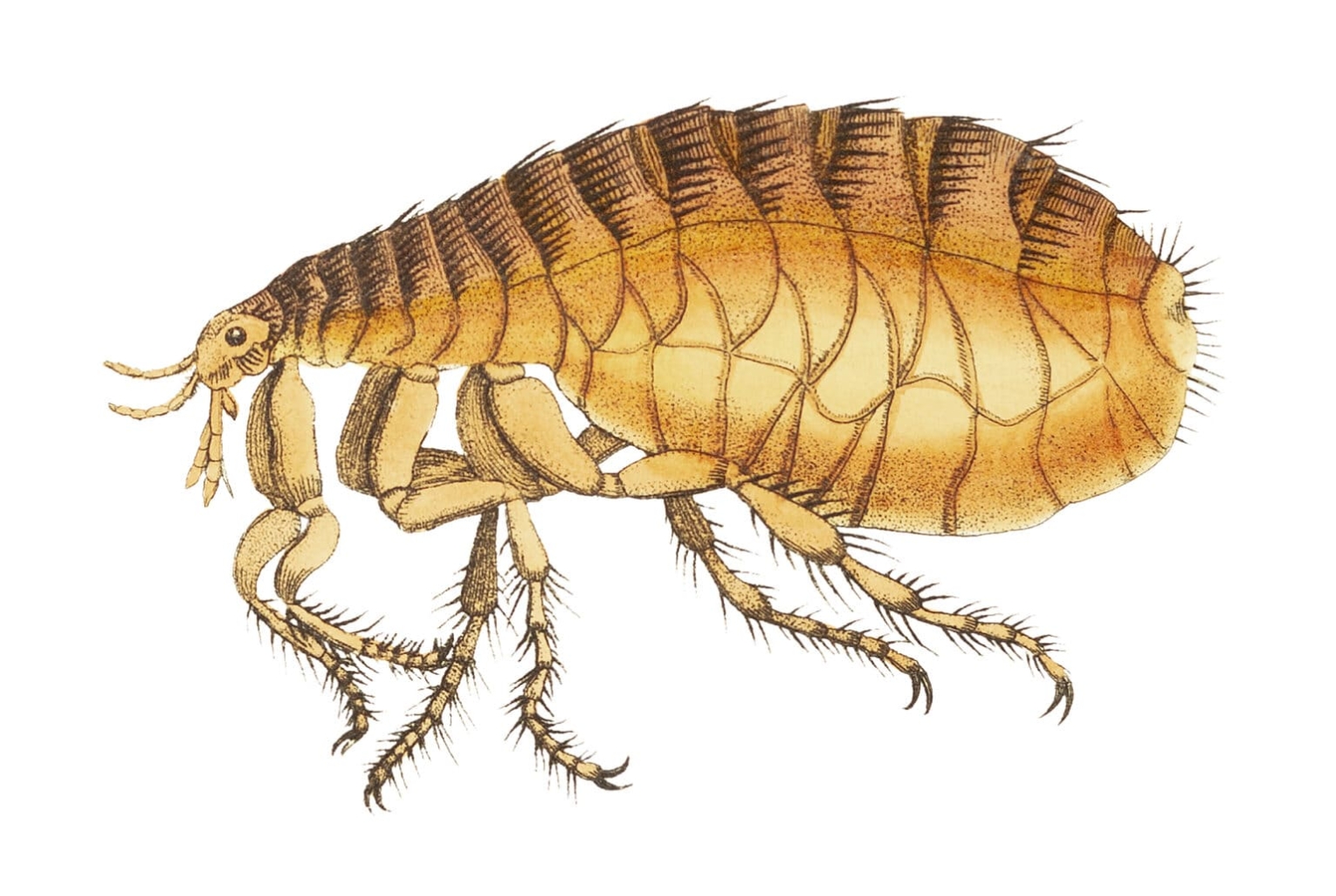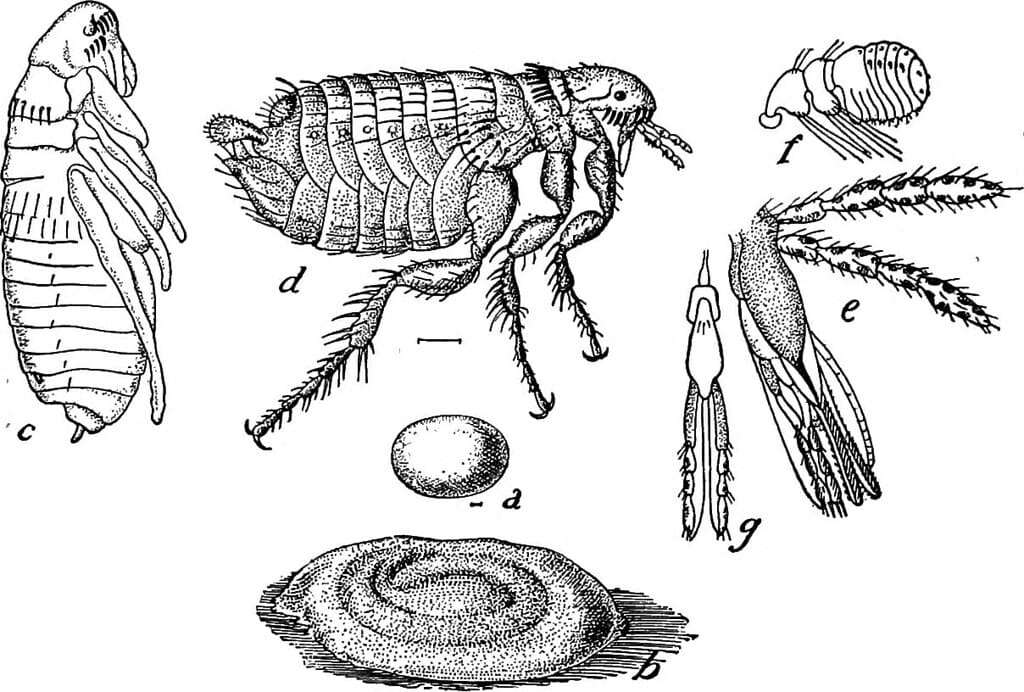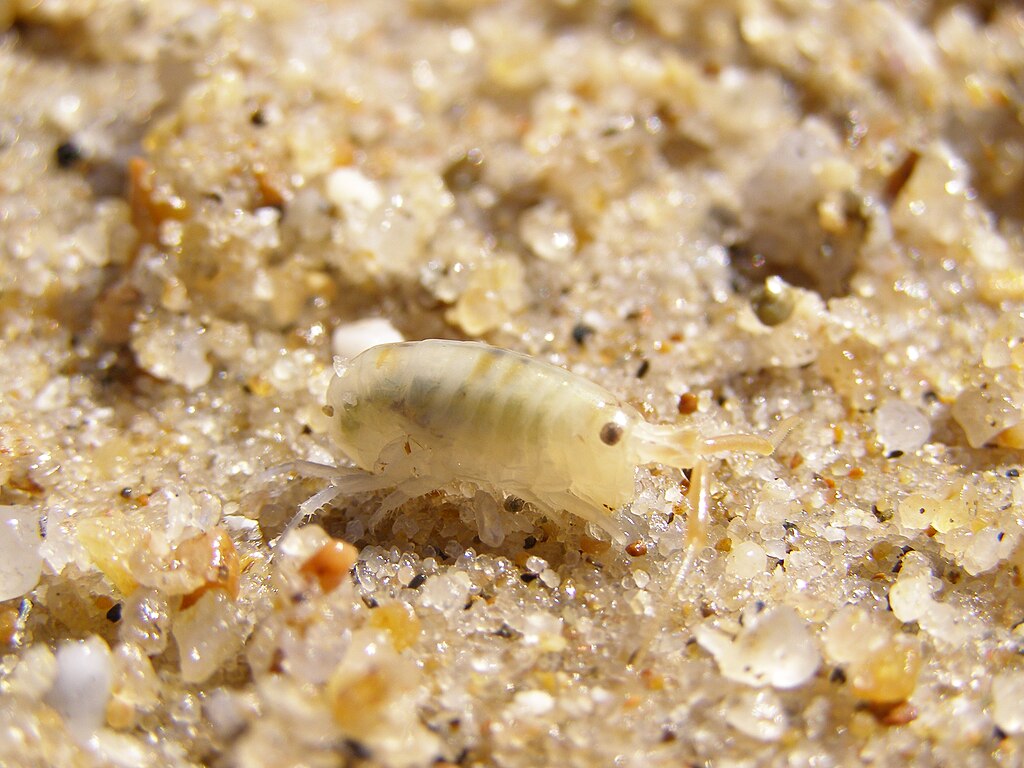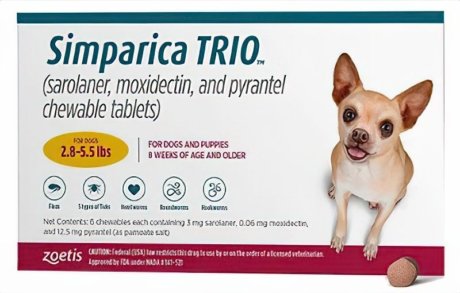What Do Fleas Look Like? | A Comprehensive Guide to Flea Identification
Fleas, those minuscule yet mighty nuisances, are a common household problem. Recognizing what fleas look like is your first line of defense against these tiny troublemakers. In this in-depth guide, we’ll delve into flea anatomy, identification methods, the consequences of flea infestations, effective prevention and treatment strategies, and additional related topics.
What Do Fleas Look Like (Flea Anatomy)
Fleas, those minuscule but pesky insects, are a common nuisance for both pets and their owners. To effectively combat these tiny menaces, it’s crucial to know what they look like and how to spot them. In this article, we will provide you with a detailed description of what fleas look like and offer tips on how to identify them.

The Flea Basics
Fleas are tiny, wingless insects that feed on the blood of warm-blooded animals, primarily dogs and cats. They are part of the order Siphonaptera and belong to the family Pulicidae. These tiny critters have evolved to be expert jumpers, making them elusive and challenging to catch.
Flea Size and Color
Fleas are incredibly small, measuring between 1 to 2 millimeters in length. Due to their size, spotting them can be a real challenge. However, their coloration can aid in identification. Fleas are typically reddish-brown or dark brown, which helps them blend in with the fur of their host animals.
Flea Life Cycle
To effectively combat fleas, understanding their life cycle is crucial. Fleas undergo four distinct stages: egg, larva, pupa, and adult. Knowing this cycle helps you pinpoint the best time for intervention and control, preventing infestations from taking root.
What Do Dog Fleas Look Like:
Dog fleas (Ctenocephalides canis) are small, wingless insects that are reddish-brown in color. They typically measure around 1-2 millimeters in length. These fleas have flattened bodies that allow them to move easily through the fur of their canine hosts. One of their distinguishing features is their powerful hind legs, which are adapted for jumping. Additionally, they have sharp, needle-like mouthparts that they use to pierce the skin and feed on the blood of dogs.

What Do Cat Fleas Look Like:
Cat fleas (Ctenocephalides felis) closely resemble dog fleas in appearance. They share the same reddish-brown coloration and similar size, measuring about 1-2 millimeters long. Like dog fleas, cat fleas also have flattened bodies, making it easier for them to navigate through a cat’s fur. They possess strong hind legs designed for jumping and specialized mouthparts for feeding on their feline hosts. Cat fleas are so similar to dog fleas that they can be challenging to distinguish without the use of a microscope.
What Do Flea Bites Look Like:
Flea bites, whether on humans or pets, often present as small, red, itchy bumps on the skin’s surface. These bites tend to occur in clusters or linear patterns, often in areas where clothing is tight or where the skin is exposed. They are characterized by intense itching and discomfort, which can lead to scratching and potential skin irritation.
What Do Flea Bites Look Like On Humans:
Flea bites on humans appear as tiny, red or pinkish bumps, typically with a central puncture point where the flea inserted its mouthparts into the skin. They may be surrounded by a reddened halo. These bites are notorious for causing itching, and the urge to scratch can lead to secondary skin infections.
What Do Flea Bites Look Like On Dogs:
Flea bites on dogs manifest as small, raised, red bumps, particularly on areas with thinner fur or exposed skin. Dogs often exhibit itching, scratching, and discomfort in response to these bites. Repeated scratching can result in hair loss, skin abrasions, and even hot spots in severe cases.
What Do Sand Flea Bites Look Like:
Sand flea bites, much like other flea bites, typically appear as small, red, itchy bumps on the skin’s surface. They often occur on areas of the body exposed to sand, such as the ankles and lower legs. These bites usually have a central puncture point and may be grouped together.
What Do Fleas Look Like To The Human Eye:
Fleas are tiny insects and are challenging to see with the naked eye due to their small size, measuring only 1-2 millimeters in length. They appear as minuscule, reddish-brown specks or dots that move quickly through fur or on the skin. Their small size and agility make them difficult to spot without magnification.
What Do Cat Fleas Look Like To The Human Eye:
Cat fleas, much like dog fleas, are extremely small and difficult to see without magnification. They appear as tiny, reddish-brown specks or dots, often moving swiftly through a cat’s fur. Their size and speed make them nearly invisible to the naked human eye.
What Do Flea Eggs Look Like On Furniture:
Flea eggs are incredibly small, oval-shaped, and usually white or translucent. They measure approximately 0.5 millimeters in length. These eggs are often found in cracks, crevices, and bedding on furniture, but they are typically too tiny to be seen individually without magnification.
What Do Flea Eggs Look Like:
Flea eggs are tiny, oval, and typically have a pearly white or translucent appearance. They are exceptionally small, measuring about 0.5 millimeters in length. Flea eggs are laid by adult fleas on their host animals but often fall off into the environment, such as carpets, bedding, or floor crevices. Due to their diminutive size, they are challenging to spot without magnification.
What Do Dead Flea Eggs Look Like:
Dead flea eggs typically maintain their oval shape but may appear darker or discolored compared to live eggs. Like live eggs, they are minuscule and are often found in the same areas as live flea eggs, such as carpets and bedding.

What Do Baby Fleas Look Like:
Baby fleas, also known as flea larvae, are tiny, worm-like creatures with a whitish coloration. They measure only a few millimeters in length and lack the jumping legs that adult fleas have. Flea larvae are commonly found in dark, hidden places like carpets, bedding, and floor crevices, where they feed on organic debris and develop into pupae before reaching adulthood.
What Do Flea Larvae Look Like:
Flea larvae are small, legless, and have a white or off-white appearance. They typically measure about 2-5 millimeters in length. Flea larvae are often found in sheltered, concealed areas where they feed on organic matter and develop into pupae before emerging as adult fleas.
Flea Structure and More

Flea Body Structure
Understanding the anatomy of a flea is essential for accurate identification. Here are some key features:
1. Hard Exoskeleton
Fleas have a hard exoskeleton that is designed to protect them from being crushed or scratched. This exoskeleton appears shiny and is responsible for their characteristic armor-like appearance.
2. Three Body Segments
A flea’s body is divided into three distinct segments: the head, thorax, and abdomen. The thorax is where the powerful leg muscles are located, allowing them to jump incredible distances compared to their size.
3. Antennae
Fleas have short, bristle-like antennae on their heads that help them detect changes in their environment, particularly the presence of hosts.
4. Mouthparts
Fleas possess specialized mouthparts adapted for piercing the skin of their host and feeding on blood. These mouthparts are designed to facilitate efficient feeding.
Flea Movement
One of the key identifying features of fleas is their jumping ability. Fleas are exceptional jumpers, and they can leap up to 150 times their body length. This incredible agility allows them to move quickly between hosts and evade detection.
Where to Look for Fleas
To identify fleas, you’ll need to know where to look. Fleas tend to hide in areas where your pets spend a lot of time. Here are some common places to check:
- Your Pet’s Fur: Gently part your pet’s fur and look for tiny, fast-moving insects. Fleas often hide close to the skin.
- Pet Bedding: Fleas can infest pet bedding, so inspect these areas thoroughly.
- Carpet and Upholstery: Flea eggs, larvae, and pupae can be found in carpets and upholstery, so keep an eye out for these as well.
- Cracks and Crevices: Fleas can hide in cracks and crevices in your home, so pay attention to these areas.
Signs of Flea Infestation
Aside from identifying the fleas themselves, there are signs of flea infestations to watch for:
- Excessive Scratching: If your pet is constantly scratching or biting their fur, it could be a sign of flea bites.
- Tiny Red Bumps: Flea bites can appear as small, red, raised bumps on your pet’s skin.
- Flea Dirt: Flea dirt, which looks like tiny black specks, may be visible in your pet’s fur or on their bedding. This is actually flea feces.
- Hair Loss: Severe flea infestations can lead to hair loss in pets.
- Skin Irritation: Flea bites can cause skin irritation and inflammation.
Identifying Fleas
A. On Pets
Spotting fleas on your furry friends requires careful inspection. Examine your pet’s fur thoroughly, paying close attention to areas like the neck, ears, tail, and belly. Signs of a flea infestation may include excessive itching, scratching, or the presence of red bite marks. These vigilant checks can help you catch fleas early, minimizing your pets’ discomfort.
B. In Your Home
Fleas aren’t confined to your pets; they can infest your living spaces as well. To detect them indoors, start by scrutinizing areas where your pets spend the most time—carpets, bedding, and furniture. Look for tiny, oval-shaped flea eggs, translucent larvae, and agile adult fleas. Swift action is vital to prevent a full-blown infestation.
C. Under a Microscope
For those inclined toward a more scientific approach, examining fleas under a microscope provides detailed insights. This method offers a higher level of accuracy when identifying fleas, especially if you encounter unfamiliar pests in your home.
Flea vs. Other Pests
It’s easy to mistake fleas for other common household pests, such as ticks, bedbugs, or ants. Here’s a concise comparison to help you distinguish them:
- Fleas are tiny, reddish-brown insects with strong hind legs for jumping.
- Ticks are larger, often brown or black, and may attach to their hosts.
- Bedbugs are flat, oval-shaped, and reddish-brown but lack the pronounced legs of fleas.
- Ants have a segmented body, quite different from the compact form of fleas.
Understanding these distinctions ensures accurate pest control.
The Consequences of Flea Infestations
Beyond causing discomfort and annoyance, fleas can pose serious health risks to both pets and humans. These tiny parasites can transmit various diseases, including tapeworm, typhus, and Bartonella. Effective flea control is not only about comfort but also about safeguarding your family’s well-being.
Prevention and Treatment

Preventing Flea Infestations
Preventing and managing flea infestations require a multifaceted approach:
- Regularly groom and bathe your pets, using flea shampoos or treatments.
- Vacuum your home frequently, paying extra attention to areas where your pets spend time.
- Use veterinarian-recommended flea preventatives tailored to your pet’s needs.
- Consider professional pest control services if infestations persist.
Treating Flea Infestations
When fleas have already taken hold, prompt and effective treatment is crucial:
- Consult with your veterinarian for suitable flea treatments for your pets.
- Clean and sanitize your home thoroughly, including washing bedding and vacuuming.
- Consider the use of flea bombs or sprays under professional guidance.
Effective flea control necessitates consistency and a combination of methods suitable for your unique situation.
Additional Related Topics
Flea-Borne Diseases
Fleas not only cause discomfort but can also transmit dangerous diseases. Learn more about the diseases associated with flea infestations and how to protect your loved ones.
Natural Flea Control
Explore natural and chemical-free methods for preventing and treating fleas, especially if you have concerns about using conventional pesticides.
Conclusion:
In conclusion, recognizing what fleas look like is fundamental to safeguarding your pets, home, and health. From flea identification to prevention and treatment, taking the right steps ensures a flea-free environment for both your cherished pets and your family. Stay vigilant, take action, and enjoy a flea-free living space. Your pets will thank you for it!
Frequently asked questions (FAQs):
-
What do fleas look like?
Fleas are tiny, reddish-brown insects, usually measuring between 1-2 millimeters in length. They have a flattened body, strong hind legs for jumping, and specialized mouthparts for feeding on blood.
-
How do I know if my pet has fleas?
Common signs of fleas on pets include excessive itching, scratching, visible red bite marks, and sometimes, the presence of tiny moving insects in their fur.
-
Can fleas infest my home?
Yes, fleas can infest your home. They lay eggs in your pet’s fur, which can then fall into carpets, bedding, and furniture, leading to a home infestation.
-
Are fleas harmful to humans?
Fleas can transmit diseases to humans, such as tapeworm, typhus, and Bartonella. While not usually life-threatening, these diseases can cause health issues.
-
How can I prevent fleas on my pets?
Prevent fleas by regularly grooming and bathing your pets, using veterinarian-recommended flea preventatives, and keeping your home clean and vacuumed.
-
What’s the best way to get rid of a flea infestation?
Effective flea control involves a combination of measures: treat your pets, clean and vacuum your home thoroughly, and consider professional pest control if infestations persist.
-
Are there natural remedies for flea control?
Yes, natural remedies like diatomaceous earth, herbal flea collars, and essential oil treatments can help with flea prevention. Consult your veterinarian for safe options.
-
How often should I treat my pet for fleas?
The frequency of flea treatment depends on the product you use. Some treatments are applied monthly, while others are administered every few months. Consult your vet for a personalized schedule.
-
Can fleas survive in cold weather?
Fleas can survive in cold weather by seeking warmth indoors. They become dormant in freezing temperatures but can become active when it warms up.
-
How can I safely remove fleas from my home?
Safely remove fleas by washing pet bedding, vacuuming carpets and furniture, and using flea control products. Be cautious with chemical treatments, and follow instructions carefully.
-
Do flea collars really work?
Flea collars can be effective, but their efficacy may vary. Consult with your veterinarian to choose the right type and brand of flea collar for your pet.
-
Can I get fleas from my pets?
While it’s rare, humans can get flea bites from infected pets. However, fleas prefer animal hosts and usually don’t infest humans.
-
Are there home remedies for soothing flea bites on pets?
Home remedies like oatmeal baths and chamomile tea compresses can help soothe itching from flea bites on pets. Consult your vet for guidance.
-
Can I use dish soap to wash fleas off my pet?
A mild dish soap bath can temporarily immobilize fleas but won’t provide long-term control. Use proper flea shampoos or consult your veterinarian for effective solutions.
-
What’s the importance of regular flea prevention even if I don’t see fleas on my pet?
Regular prevention is essential because fleas can be present without visible signs. Prevention helps protect your pet from discomfort and potential health issues.
Recommended:
Unveiling the Enigma of Bordetella | From Types to Treatment





























